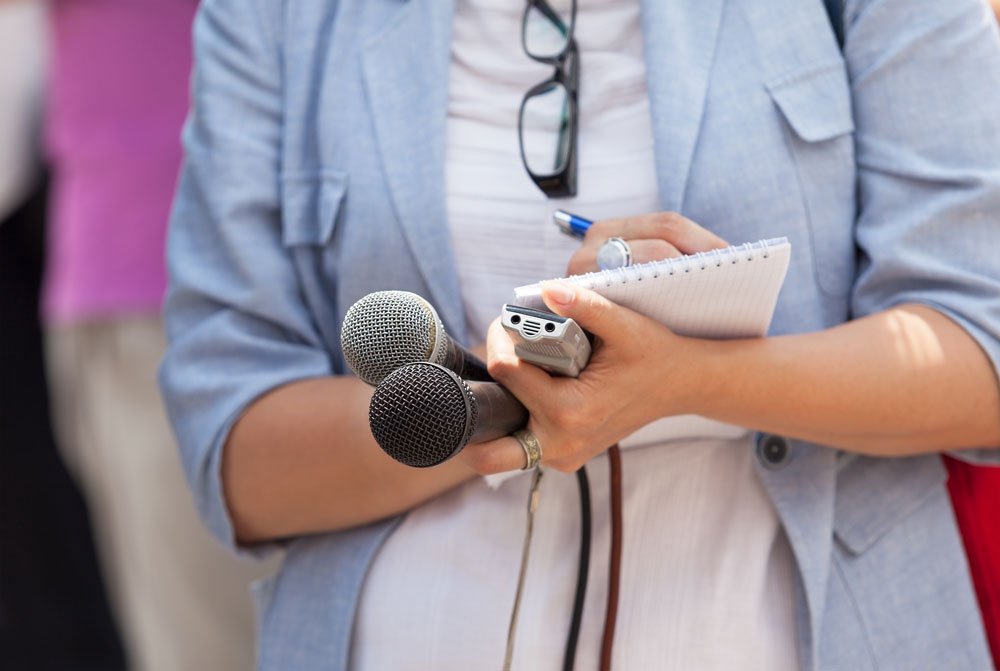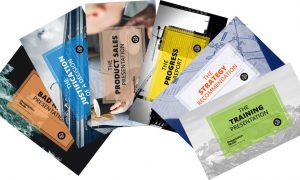The 8-Step Guide to Approaching Presentations with a Journalistic Mindset


In Gabby Reed’s first post for us she outlined the 5 Dos and Don’ts of Presentation Design. Here she details how to approach a presentation with a journalistic mindset. But what does that mean? Read on to find out…
My educational background is in journalism. And throughout my career – no matter what field I am in – and my personal life, I have found that thinking like a journalist has significantly improved my writing. Beyond the relentless pursuit of who, what, where, when, and why, various tenets of journalism have the ability to aid people in all disciplines and industries in creating compelling content.
It can include something as simple as asking clients or consumers if there is anything you didn’t ask about a particular area or topic that they believe you should know before leaving a meeting, starting a project, or conducting research. Not only does this simple journalistic tactic demonstrate your interest in the person and the project, but it also prompts the individual to reveal some aspect of their vision or desires that they may not have already divulged in previous conversations.
That’s why this detail-driven strategy is located at the top of the following list of 8 ways to present like a journalist.
1) Focus on details
In Journalism 101, the professor will tell you that one of the main qualities that will separate you from your fellow journalism peers is attention to detail. This means more than knowing an interview subject’s first and last name. It means knowing the color of their eyes, the type of shirt they were wearing, or the way they clutched a coffee cup when they talked about a certain person, place, or thing. It’s the tiny details that most people would miss that make a story unique. That makes it personal.
While I was reporting for a story during a local, downtown event in my small hometown in Indiana, I spent about an hour just observing passersby and writing notes about the environment, the people and the interactions between them. When I sat down to craft my notes into a compelling narrative, I incorporated details from my observations and produced a delayed lead with an anecdote of an interaction I witnessed. Although the story had roots in the news realm, I used these minute details to add some textual imagery.
For a presenter, focusing on the little details of your topic will not only add another level of description to enthrall your audience, but it will also enhance your credibility in the eyes of audience members. Projecting credibility is much more than touting your position status or yammering about your high-profile clients. Focus on the people-centric details of your presentation to form a stronger connection with your audience.
2) Understand your audience
Before a journalist even considers pitching a story to an editor, they identify the publication’s audience and determine what topic would be of interest to them. When working for the local paper, several story pitches came across my desk. But, I only selected those that would provide real value to our readership. That they couldn’t read about somewhere else, or that we could cover in a novel and intriguing way – standing out from competitors.
A presenter should always approach their presentation this way because if your audience isn’t going to care about it, then why should you talk about it?
3) Present timely content
In the same vein as understanding your audience is offering appropriate content to your audience. Today’s 24-hour news cycle has cultivated a culture that demands constant updates on the ever-changing social, political, environmental, national, and global landscapes. Whether you like it or not, event-goers will hold presenters to similar standards of precise and speedy distribution of content. As a weekly newspaper, cultivating timely content could prove a tricky task each week. Though challenging, this task pushed the publication staff to tackle new stories and to cover them in creative ways.
If you provide content that your audience craves, your presentation will be more effective and your audience will be more impressed.
4) Avoid jargon
The average American reads at an eighth grade level. According to a recent study, businessman turned presidential candidate Donald Trump speaks below a sixth grade level, which could explain why he continues to perform well in primary elections across the country, recently snatching another victory in New York.
Another study by Contently’s Shane Snow found that a Buzzfeed article written at a third grade reading level was shared more than more taxing reads from the Huffington Post, New York Times, and Economist.
Another component of the infamous jargon community is the abbreviation – a useful internal tool, but potentially confusing external communication device. Both the AP and APA Stylebooks – the journalism content creation bibles – discourage the frequent and abusive use of abbreviations, primarily due to their reputation for confusing audiences.
When I was writing a story about a local government or state government agency, I made sure to spell out the entire name of said organizational body and then include the abbreviation in parentheses next to it. Although it was referenced with the abbreviation for the remainder of the article, it was spelled out in its entirety in the first paragraph so readers to refer back to it.
This all goes to show that, when possible, limit the use of technical terms and abbreviations in a presentation, especially if the goal is audience comprehension.
5) Craft captivating leads
The average individual’s attention span has dropped from 12 seconds to 8 in the past decade with the increasing popularity of social media sites and quick reference resources. Journalists have understood this well before this recent decrease in attention. During the Civil War era, journalists encountered issues of telegraph lines falling down. To ensure the meat of their story would make it through, they developed a method of writing the most important information first. Nowadays, however, this strategy has become less and less necessary – allowing for more creativity in story openings.
Presenters don’t have to worry about this either, but they do have to worry about audience attention spans. It is paramount that presenters craft a compelling presentation opening.
6) Incorporate supporting visuals
In nearly every newsroom, a journalist cannot simply get away with merely writing a story. Most every editor will expect a visual component – like a graph, poll, map, infographic, photo, etc. – in conjunction with the text. With approximately three out of every four people identifying as visual learners, it’s no mystery why this would be a requirement.
During my days as a reporter, I did everything from interviewing sources, taking notes, and compiling research to writing stories, shooting video, and providing photography options. A well-rounded and deep understanding of a story is a vital part of the journalism field and individuals must be capable of structuring a narrative with text and visuals.
As a presenter, simply telling your audience a piece of information will only garner 10% recall three days after your presentation. But, if you place a relevant, supporting image on your slide, your audience will remember 65% of the content a few days later. Bottom line: include visuals.
7) Embrace a storytelling narrative
If you have ever perused our blog before, you probably know that bullet points break our hearts. It also breaks the hearts of many researchers, with studies indicating that 10-15% of audience members will remember particular bullet pointed information a few minutes after a presentation, compared to the 80% who will recall story-driven, narrative elements and supporting images.
Researchers have discovered that character-focused narratives elevate empathy in listeners as a result of increased oxytocin levels, which rise when people feel like they are bonding socially. Sam Sanders of NPR asks himself how he feels about certain moments during an interview to capture the emotion in a scene so that he can accurately relay it to listeners.
8) Complete thorough research
Perhaps the most crucial lesson my journalism studies taught me was the constant pursuit of accuracy in everything you do – from writing an article to participating in an interview and even giving a presentation. Never purposely mislead your audiences. Always conduct enough research to support your insights and utilize reputable sources to increase trust between you and others. I would spend a large chunk of time just researching a topic, event, or person to inform my question-creation responsibilities and to establish my credibility as a reporter.
The more a journalist knows about a topic, the better and more comprehensive questions he or she can ask. The more a presenter knows about a topic, the better and more comprehensive content he or she can provide to any audience.
Check out this lengthy list of research resources for presenters so you can approach the stage with full confidence in your product.
Pair these tactics with an intense passion for your topic and boundless curiosity and you will have the perfect combination for a powerful presentation. To learn more about a journalist’s mindset and how presenters can harness it, read the following articles and resources:
Storytelling Tactics for Presentations: Creating the Right Villain
7 Ways to think like a journalist when creating content













